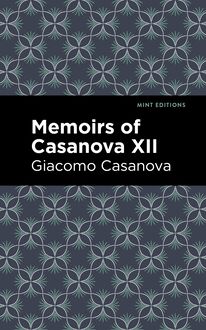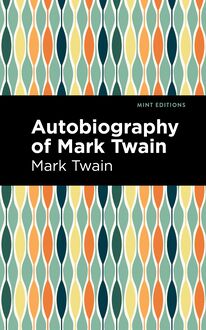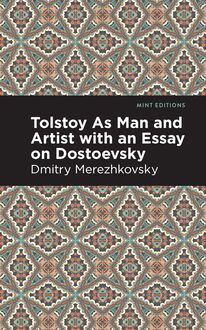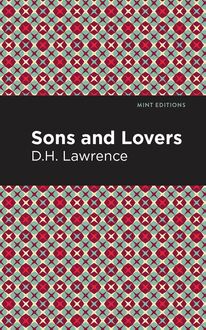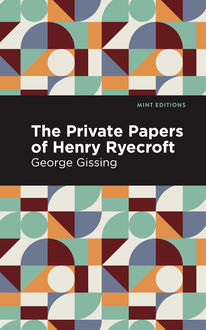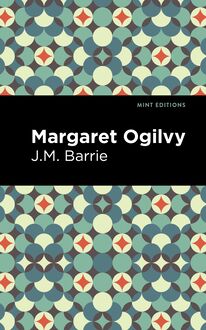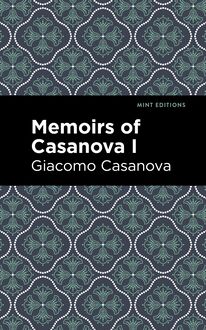-
 Univers
Univers
-
 Ebooks
Ebooks
-
 Livres audio
Livres audio
-
 Presse
Presse
-
 Podcasts
Podcasts
-
 BD
BD
-
 Documents
Documents
-
- Cours
- Révisions
- Ressources pédagogiques
- Sciences de l’éducation
- Manuels scolaires
- Langues
- Travaux de classe
- Annales de BEP
- Etudes supérieures
- Maternelle et primaire
- Fiches de lecture
- Orientation scolaire
- Méthodologie
- Corrigés de devoir
- Annales d’examens et concours
- Annales du bac
- Annales du brevet
- Rapports de stage
La lecture à portée de main
Vous pourrez modifier la taille du texte de cet ouvrage
Découvre YouScribe en t'inscrivant gratuitement
Je m'inscrisDécouvre YouScribe en t'inscrivant gratuitement
Je m'inscrisEn savoir plus
Vous pourrez modifier la taille du texte de cet ouvrage
En savoir plus

Description
The Life and Romances of Mrs. Eliza Haywood (1915) is a monograph by George Whicher. Highly regarded by feminist scholars today, Haywood was a prolific writer who revolutionized the English novel while raising a family, running a pamphlet shop in Covent Gardens, and pursuing a career as an actress and writer for some of London’s most prominent theaters. In The Life and Romances of Mrs. Eliza Haywood, Whicher blends biography and literary criticism in order to present an authoritative vision of the life and career of one of England’s most influential and misunderstood writers. Notoriously private, Haywood is a major figure in English literature about whom little is known for certain. Scholars believe she was born Eliza Fowler in Shropshire or London, but are unclear on the socioeconomic status of her family. She first appears in the public record in 1715, when she performed in an adaptation of Shakespeare’s Timon of Athens in Dublin. Famously portrayed as a woman of ill-repute in Alexander Pope’s Dunciad (1743), it is believed that Haywood had been deserted by her husband to raise their children alone. Pope’s account is likely to have come from poet Richard Savage, with whom Haywood was friends for several years beginning in 1719 before their falling out. This period coincided with the publication of Love in Excess (1719-1720), Haywood’s first and best-known novel. Alongside Delarivier Manley and Aphra Behn, Haywood was considered one of the leading romance writers of her time. Haywood’s novels, such as Idalia; or The Unfortunate Mistress (1723), The Distress’d Orphan; or Love in a Madhouse (1726), and The History of Miss Betsy Thoughtless (1751) often explore the domination and oppression of women by men. In The Life and Romances of Mrs. Eliza Haywood, George Whicher does the best he can with an incomplete record to renew academic interest in the work of an iconic storyteller. With a beautifully designed cover and professionally typeset manuscript, this edition of George Whicher’s The Life and Romances of Mrs. Eliza Haywood is a classic of English literary criticism reimagined for modern readers.
Sujets
Informations
| Publié par | Mint Editions |
| Date de parution | 16 novembre 2021 |
| Nombre de lectures | 0 |
| EAN13 | 9781513294452 |
| Langue | English |
Informations légales : prix de location à la page 0,0450€. Cette information est donnée uniquement à titre indicatif conformément à la législation en vigueur.
Extrait
The Life and Romances of Mrs. Eliza Haywood
George Whicher
The Life and Romances of Mrs. Eliza Haywood was first published in 1915.
This edition published by Mint Editions 2021.
ISBN 9781513291604 | E-ISBN 9781513294452
Published by Mint Editions ®
minteditionbooks.com
Publishing Director: Jennifer Newens
Design & Production: Rachel Lopez Metzger
Project Manager: Micaela Clark
Typesetting: Westchester Publishing Services
C ONTENTS I. E LIZA H AYWOOD’S L IFE II. S HORT R OMANCES OF P ASSION III. T HE D UNCAN C AMPBELL P AMPHLETS IV. S ECRET H ISTORIES AND S CANDAL N OVELS V. T HE H EROINE OF “ T HE D UNCIAD” VI. L ETTERS AND E SSAYS VII. L ATER F ICTION: T HE D OMESTIC N OVEL VIII. C ONCLUSION
I
E LIZA H AYWOOD’S L IFE
A utobiography was almost the only form of writing not attempted by Eliza Haywood in the course of her long career as an adventuress in letters. Unlike Mme de Villedieu or Mrs. Manley she did not publish the story of her life romantically disguised as the Secret History of Eliza, nor was there One of the Fair Sex (real or pretended) to chronicle her “strange and surprising adventures” or to print her passion-stirring epistles, as had happened with Mrs. Aphra Behn’s fictitious exploits and amorous correspondence. 1 Indeed the first biographer of Mrs. Haywood 2 hints that “from a supposition of some improper liberties being taken with her character after death by the intermixture of truth and falsehood with her history,” the apprehensive dame had herself suppressed the facts of her life by laying a “solemn injunction on a person who was well acquainted with all the particulars of it, not to communicate to anyone the least circumstance relating to her.” The success of her precaution is evident in the scantiness of our information about her. The few details recorded in the “Biographia Dramatica” can be amplified only by a tissue of probabilities. Consequently Mrs. Haywood’s one resemblance to Shakespeare is the obscurity that covers the events of her life.
She was born in London, probably in 1693, and her father, a man by the name of Fowler, was a small shop-keeper. 3 She speaks vaguely of having received an education beyond that afforded to the generality of her sex. Her marriage to Valentine Haywood, 4 a clergyman at least fifteen years older than his spouse, took place before she was twenty, for the Register of St. Mary Aldermary records on 3 December, 1711, the christening of Charles, son of Valentine Haywood, clerk, and Elizabeth his wife. Her husband held at this time a small living in Norfolk, and had recently been appointed lecturer of St. Mathews, Friday Street. Whether the worthy cleric resided altogether in London and discharged his duties in the country by proxy, or whether Mrs. Haywood, like Tristram Shandy’s mother, enjoyed the privilege of coming to town only on certain interesting occasions, are questions which curious research fails to satisfy. At any rate, one of the two children assigned to her by tradition was born, as we have seen, in London.
No other manifestation of their nuptial happiness appeared until 7 January, 1721, on which date the “Post Boy” contained an Advertisement of the elopement of Mrs. Eliz. Haywood, wife of Rev. Valentine Haywood. 5 The causes of Eliza’s flight are unknown. Our only knowledge of her temperament in her early life comes from a remark by Nichols that the character of Sappho in the “Tatler” 6 may be “assigned with… probability and confidence, to Mrs. Elizabeth Heywood, who… was in all respects just such a character as is exhibited here.” Sappho is described by Steele as “a fine lady, who writes verses, sings, dances, and can say and do whatever she pleases, without the imputation of anything that can injure her character; for she is so well known to have no passion but self-love, or folly but affectation, that now, upon any occasion, they only cry, ‘It is her way!’ and ‘That is so like her!’ without farther reflection.” She quotes a “wonderfully just” passage from Milton, calls a licentious speech from Dryden’s “State of Innocence” an “odious thing,” and says “a thousand good things at random, but so strangely mixed, that you would be apt to say, all her wit is mere good luck, and not the effect of reason and judgment.” In the second paper Sappho quotes examples of generous love from Suckling and Milton, but takes offence at a letter containing some sarcastic remarks on married women. We know that Steele was personally acquainted with Mrs. Manley, and it is possible that he knew Mrs. Haywood, since she later dedicated a novel to him. With some reservation, then, we may accept this sketch as a fair likeness. As a young matron of seventeen or eighteen she was evidently a lively, unconventional, opinionated gadabout fond of the company of similar She-romps, who exchanged verses and specimen letters with the lesser celebrities of the literary world and perpetuated the stilted romantic traditions of the Matchless Orinda and her circle. A woman of her independence of mind, we may imagine, could not readily submit to the authority of an arbitrary, orthodox clergyman husband.
Mrs. Haywood’s writings are full of the most lively scenes of marital infelicity due to causes ranging from theological disputes to flagrant licentiousness. Her enemies were not so charitable as to attribute her flight from her husband to any reason so innocent as incompatibility of temper or discrepancy of religious views. The position of ex-wife was neither understood nor tolerated by contemporary society. In the words of a favorite quotation from “Jane Shore”:
“But if weak Woman chance to go astray,
If strongly charm’d she leave the thorny Way,
And in the softer Paths of Pleasure stray,
Ruin ensues, Reproach and endless Shame;
And one false Step entirely damns her Fame:
In vain, with Tears, the Loss she may deplore,
In vain look back to what she was before,
She sets, like Stars that fall, to rise no more!”
Eliza Haywood, however, after leaving the thorny way of matrimony, failed to carry out the laureate’s metaphor. Having less of the fallen star in her than Mr. Rowe imagined, and perhaps more of the hen, she refused to set, but resolutely faced the world, and in spite of all rules of decorum, tried to earn a living for herself and her two children, if indeed as Pope’s slander implies, she had children to support.
The ways in which a woman could win her bread outside the pale of matrimony were extremely limited. A stage career, connected with a certain degree of infamy, had been open to the sex since Restoration times, and writing for the theatre had been successfully practiced by Mrs. Behn, Mrs. Manley, Mrs. Centlivre, Mrs. Pix, and Mrs. Davys. The first two female playwrights mentioned had produced beside their dramatic works a number of pieces of fiction, and Mrs. Mary Hearne, Mrs. Jane Barker, and Mrs. Sarah Butler had already gained a milder notoriety as romancières . Poetry, always the elegant amusement of polite persons, had not yet proved profitable enough to sustain a woman of letters. Eliza Haywood was sufficiently catholic in her taste to attempt all these means of gaining reputation and a livelihood, and tried in addition a short-lived experiment as a publisher. Beside these literary pursuits we know not what obscure means for support she may have found from time to time.
Her first thought, however, was apparently of the theatre, where she had already made her debut on the stage of the playhouse in Smock Alley (Orange Street), Dublin during the season of 1715, as Chloe in “Timon of Athens; or, the Man-Hater.” 7 One scans the dramatis personae of “Timon” in vain for the character of Chloe, until one recalls that the eighteenth century had no liking for Shakespeare undefiled. The version used by the Theatre Royal was, of course, the adaptation by Thomas Shadwell, in which Chloe appears chiefly in Acts II and III as the maid and confidant of the courtesan Melissa. Both parts were added by Og. The r ô le of Cleon was taken by Quin, later an interpreter of Mrs. Haywood’s own plays. But if she formed a connection with either of the London theatres after leaving her husband, the engagement was soon broken off, and her subsequent appearances as an actress in her comedy of “A Wife to be Lett” (1723) and in Hatchett’s “Rival Father” (1730) were due in the one case to an accident and in the other to her friendship for the playwright.
She herself, according to the “Biographia Dramatica,” when young “dabbled in dramatic poetry; but with no great success.” The first of her plays, a tragedy entitled “The Fair Captive,” was acted the traditional three times at Lincoln’s Inn Fields, beginning 4 March, 1721. 8 Aaron Hill contributed a friendly epilogue. Quin took the part of Mustapha, the despotic vizier, and Mrs. Seymour played the heroine. On 16 November, it was presented a fourth time for the author’s benefit, 9 then allowed to die. Shortly after the first performance the printed copy made its appearance. In the “Advertisement to the Reader” Mrs. Haywood exposes the circumstances of her turning playwright, na ï vely announcing:
“To attempt anything in Vindication of the following Scenes, wou’d cost me more Time than the Composing ’em took me up…
“This Tragedy was originally writ by Capt. Hurst, and by him deliver’d to Mr. Rich, to be acted soon after the opening of the New House; 10 but the Season being a little too far elaps’d for the bringing it on then, and the Author oblig’d to leave the Kingdom, Mr. Rich became the Purchaser of it, and the Winter following order’d it into Rehearsal: but found it so unfit for Representation, that for a long time he laid aside all thoughts of making anything of it, till last January, he gave me the History of his Bargain, and made me some Proposals concerning the new modelling it: but however I was prevail’d upon, I cannot say my Inclination had much share in my Consent… On Rea
-
 Univers
Univers
-
 Ebooks
Ebooks
-
 Livres audio
Livres audio
-
 Presse
Presse
-
 Podcasts
Podcasts
-
 BD
BD
-
 Documents
Documents
-
Jeunesse
-
Littérature
-
Ressources professionnelles
-
Santé et bien-être
-
Savoirs
-
Education
-
Loisirs et hobbies
-
Art, musique et cinéma
-
Actualité et débat de société
-
Jeunesse
-
Littérature
-
Ressources professionnelles
-
Santé et bien-être
-
Savoirs
-
Education
-
Loisirs et hobbies
-
Art, musique et cinéma
-
Actualité et débat de société
-
Actualités
-
Lifestyle
-
Presse jeunesse
-
Presse professionnelle
-
Pratique
-
Presse sportive
-
Presse internationale
-
Culture & Médias
-
Action et Aventures
-
Science-fiction et Fantasy
-
Société
-
Jeunesse
-
Littérature
-
Ressources professionnelles
-
Santé et bien-être
-
Savoirs
-
Education
-
Loisirs et hobbies
-
Art, musique et cinéma
-
Actualité et débat de société
- Cours
- Révisions
- Ressources pédagogiques
- Sciences de l’éducation
- Manuels scolaires
- Langues
- Travaux de classe
- Annales de BEP
- Etudes supérieures
- Maternelle et primaire
- Fiches de lecture
- Orientation scolaire
- Méthodologie
- Corrigés de devoir
- Annales d’examens et concours
- Annales du bac
- Annales du brevet
- Rapports de stage

